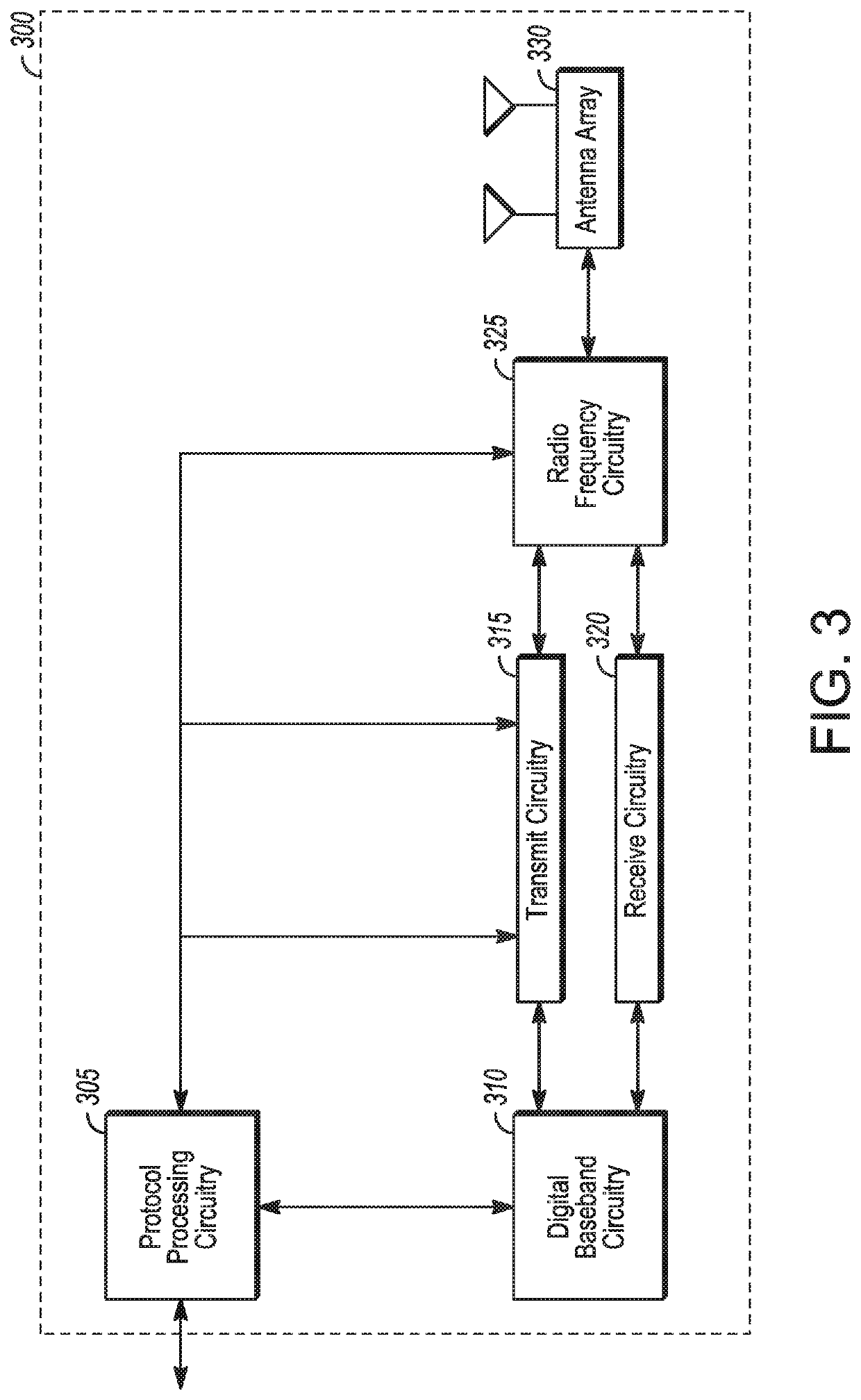Wake up signal for machine type communication and narrowband-internet-of-things devices
a technology of narrowband internet of things and signal, applied in the field of radio access networks, can solve the problems of substantial power consumption, power drain, and monitoring of pdcch still consuming a substantial amount of power
- Summary
- Abstract
- Description
- Claims
- Application Information
AI Technical Summary
Benefits of technology
Problems solved by technology
Method used
Image
Examples
examples
[0239]Example 1 is an apparatus of user equipment (UE), the apparatus comprising: processing circuitry arranged to: generate signaling to wake up a wake-up receiver (WUR) from one of an idle mode or connected mode Discontinuous Reception (cDRX) state; determine whether a wake-up signal (WUS) has been received by the WUR from an evolved NodeB (eNB); in response to a determination that the WUS has been received, generate signaling to wake up a transceiver for reception of a physical downlink control channel (PDCCH) for the UE in a paging occasion (PO) when the UE is in the idle mode or for reception of a physical downlink shared channel (PDSCH) for the UE when the UE is in the cDRX state; and in response to a determination that the WUS has not been received, remain in the one of the idle mode or cDRX state; a memory configured to store the WUS.
[0240]In Example 2, the subject matter of Example 1 includes, wherein the processing circuitry is further configured to: determine whether the ...
PUM
 Login to View More
Login to View More Abstract
Description
Claims
Application Information
 Login to View More
Login to View More - R&D
- Intellectual Property
- Life Sciences
- Materials
- Tech Scout
- Unparalleled Data Quality
- Higher Quality Content
- 60% Fewer Hallucinations
Browse by: Latest US Patents, China's latest patents, Technical Efficacy Thesaurus, Application Domain, Technology Topic, Popular Technical Reports.
© 2025 PatSnap. All rights reserved.Legal|Privacy policy|Modern Slavery Act Transparency Statement|Sitemap|About US| Contact US: help@patsnap.com



